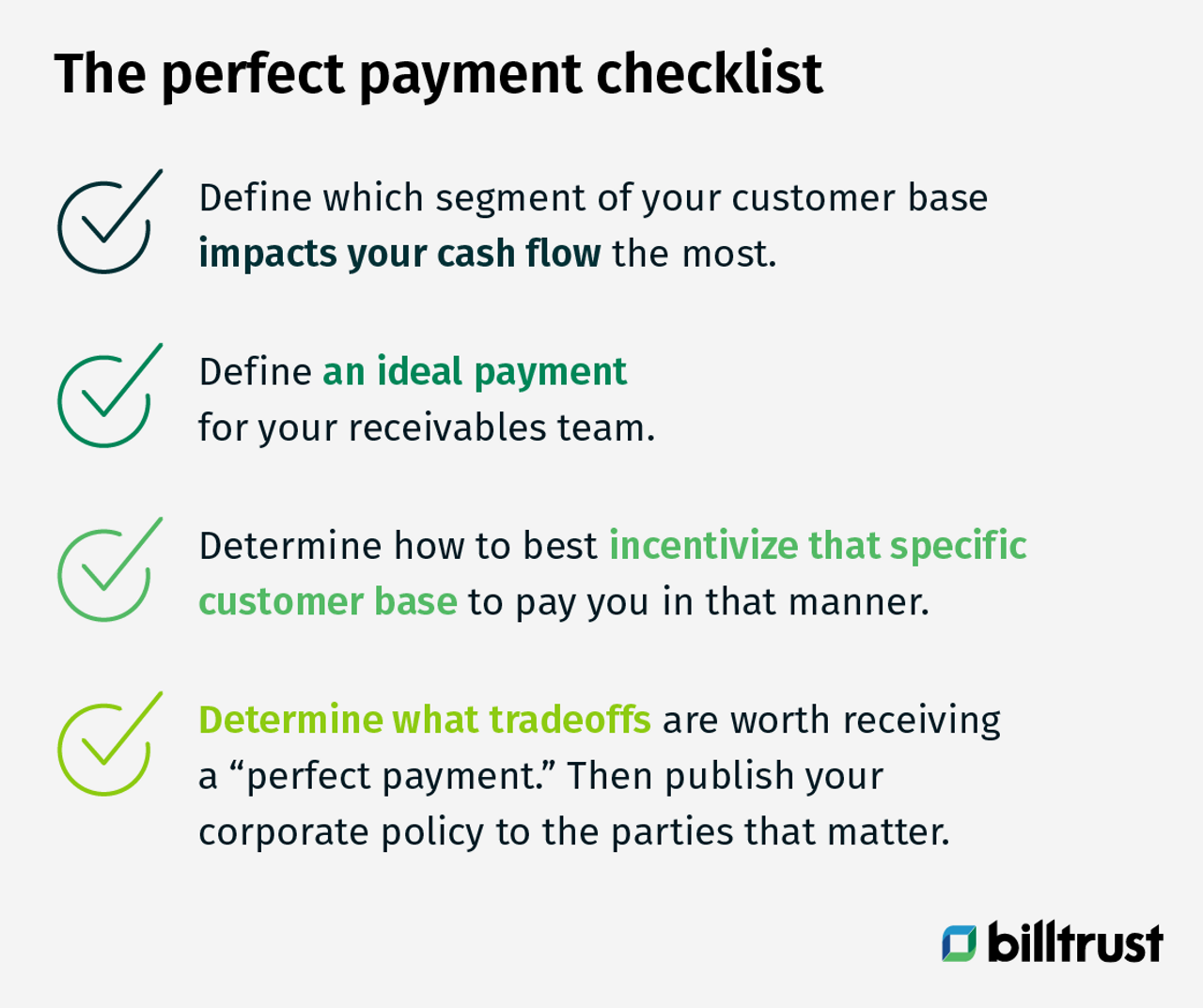Financial leaders in B2B have an overarching mission – bring money in from sales quickly and disperse money to suppliers efficiently.
At Billtrust, we’ve identified the most practical way to achieve this: promoting seamless payments. We call these “perfect” payments.
One of our largest customers was facing a common challenge:
- Customer payments were coming in later than desired.
- Received payments were difficult to process and match in their ERP.
- Many customers were taking unauthorized deductions which complicated processing.
Their solution? They analyzed their customer base and identified which segment was most impactful to their business. They then designed a company payments policy that could best cater to that particular segment while still achieving company objectives.
Having the flexibility to adjust their payments policy has had a significant impact on cash flow.

Here are the steps your company can take:
1. Define which segment of your customer base impacts your cash flow the most.
- Many Billtrust customers find that 20% of their customers equate to 70%–80% of revenue.
2. Define an ideal payment for your receivables team. Here’s what our large customer identified:
- Received before terms are due.
- Matched to the penny. No short-pays or over-pays.
- Perfect remittance that requires zero manual effort to post in an ERP.
3. Determine how to best incentivize that specific customer base to pay you in that manner. What levers can you pull?
- For our large customer, the vast majority of their revenue comes from customers in the Fortune 500.
- Of those, almost every single one has automated their accounts payables so third-party companies (banks and card issuers) were responsible for issuing payments on behalf of these customers.
- These ePayables companies make money on revenue share from credit cards (in the form of interchange) and ACH payments (in the form of fees associated with formats that embed remittance).
4. Determine what tradeoffs are worth receiving a “perfect payment.” Then publish your corporate policy to the parties that matter.

For the Billtrust customer we’ve been discussing, it looked like this:
Lever: Credit Card
i.e. giving up 200 basis points (2%) in interchange and processing fees:
- Agreed to accept virtual card payments (the issuer’s favorite form of payment) if they come within 10 days of an invoice AND if they do not contain short-pays AND if they are emailed to an inbox that automates the processing and reconciliation of these cards.
- Additionally, this company caps the total annual credit card fees they are willing to pay for processing any one customer’s credit cards. If customers choose to go above that cap, they are assessed a surcharge in most states.
Lever: Enhanced ACH
i.e. giving up 100 basis points (1%) in processing fees:
- Agreed to pay to accept enhanced ACH if it is within terms (net-30), does not contain a short-pay, and comes in a format they can auto-ingest (such as CTX).
The net effect of this for our large customers is millions of dollars in increased cash flow each month, huge reductions in DSO within their most important segment of customers and a lot less manual matching work for their back-office. The third-party ePayables issuers that control payments are highly incentivized to ensure they facilitate payments in these two ways. Facilitating this type of customer billing relationship is a win / win for all parties involved.

